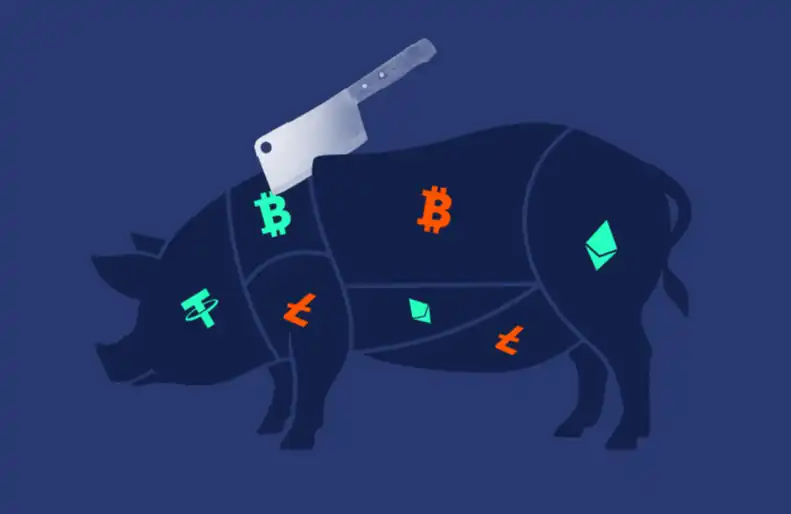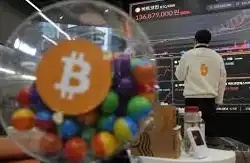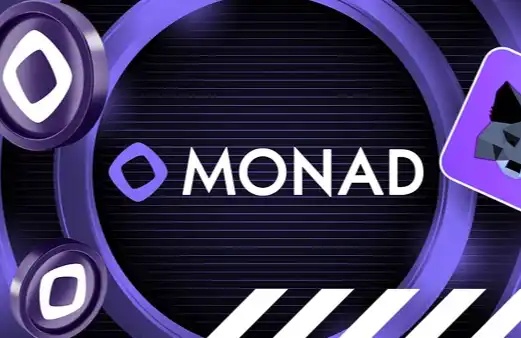Overview of the Bitcoin Ecosystem: Detailed explanation of the current mainstream BTC protocol and L2 expansion plan
Original Title: "Thousands of Trees and Pear Blossoms: A Comprehensive Overview of the Bitcoin Ecosystem"
Original Author: YBBCapital Researcher Ac-Core
2023 is an important year for the Bitcoin ecosystem to reach new heights. Against the backdrop of huge challenges facing both digital assets and traditional markets, as the year draws to a close, the Bitcoin-related ecosystem has come back to life after a period of dormancy. Although the explosion of NFTs has kept some people opposed, it is undeniable that the market enthusiasm has also brought back the "builder culture" for Bitcoin. This development trend has driven the innovation wave of Bitcoin, and the most prominent one is to lead the market's high enthusiasm for NFTs to other public chains. This article will explore the development direction of the current Bitcoin ecosystem, only outlining the current ecological overview of Bitcoin, without any investment advice. In Q1 2023, the Bitcoin asset issuance protocol experienced rapid development, and after a year, the market showed a thriving scene in Q4. Especially in the Ordinals protocol ecosystem, various tokens represented by BRC20 have caused significant wealth effects, sparking FOMO sentiment in the market. Even though it is just a JSON script file added to the Bitcoin blockchain, it has still received market attention and appreciation. As time goes by, more eye-catching protocols have emerged, including Ordinals, Atomicals, Taproot Assets, Runes, and PIPE. This trend clearly shows that the Bitcoin ecosystem is developing towards a more diversified and innovative direction, and various asset issuance protocols provide the market with a wider range of choices and more abundant development opportunities. BRC-100 Ordinals NFT Software engineer Casey Rodarmor has launched the Ordinals NFT protocol on the Bitcoin blockchain, which has officially gone live. Now, users can create and own their own NFTs on the smallest unit of Bitcoin, Satoshi (Sat), using a random but logical sorting system that makes each sat unique. According to reports, there are three main differences between Ordinals NFT and Ethereum NFT: ● The relevant data is stored in the Bitcoin network and does not rely on external storage such as IPFS or AWS S3; BRC-420 Atomicals, also known as the Atomic Protocol, covers multiple asset types, including homogenized tokens under the ARC20 standard, NFTs, Realms, and Collection Containers. As a blockchain asset issuance protocol based on the UTXO type, Atomicals offers two minting methods: decentralized minting and direct minting. Decentralized minting introduces Bitwork Mining, a minting method based on the PoW (Proof of Work) model. The protocol uses the smallest unit of Bitcoin, Satoshi, as the minimum unit of issuance, and the current minimum divisible unit of ATOM is 546, which can be sold or transferred in increments of 546 ATOM. The Atomicals protocol differs from Ordinals in asset trading sorting in that it does not rely on third-party sorters and can be used to create (mint), transfer, and upgrade various digital items, including native NFTs, games, digital identities, domains, and social networks. In addition, the protocol also supports the creation of interchangeable tokens, whose token name is ATOM (different from Cosmos' ATOM, only the name is the same). Recently, founder Arthur shared his views on Meta-Protocols in an interview on December 13th. He believes that Meta-Protocols are a new way for developers to create their own data structures and rules without being limited to using existing strict structures. Protocols representing Meta-Protocols, such as Atomicals Protocol, are emerging, providing developers with the opportunity to create new structures using smart contracts. This trend allows creators to focus more on the Atomicals Virtual Machine (AVM). The launch of this virtual machine allows developers to build smart contract programs on the Bitcoin network, providing them with an unprecedented way to create. This means that creators can focus more on implementing smart contracts in the Bitcoin ecosystem, promoting the process of digital innovation. Atomicals Asset Type: ● ARC20: A token format standard similar to BRC20 on Ordinals; ● Realm: A new concept proposed by Atomicals, aimed at disrupting traditional domain names and being used as a prefix; ● Collection Containers: This is a data type used to define NFT Collections, mainly used to store readable NFTs and related metadata. As of December 20th, the market capitalization of TOOTHY, which currently has the largest market volume, is 46.12 BTC, with a 7-day trading volume of 25.74 BTC. ARC-20 AVM On December 13th, Arthur, the founder of Atomicals, stated in an interview that the meta-protocol is a new way for developers to create their own data structures and rules without being limited by existing strict structures. Meta-protocols such as the Atomicals Protocol continue to emerge, allowing developers to create new structures using smart contracts. This allows creators to focus on the Atomicals Virtual Machine (AVM), which enables developers to build smart contract programs on the Bitcoin network. Runes was proposed by Casey Rodarmor, the creator of the Ordinals protocol, to address the efficiency issues present in BRC-20. Unlike some protocols that are complex, Runes is designed to be simple and elegant. By using OP_RETURN in transactions, Runes facilitates the allocation of tokens to specific UTXOs, with output indexes, token amounts, and token IDs. ● Off-chain computation and on-chain proof: Without changing the Bitcoin consensus, BitVM undoubtedly needs to move a large amount of computation and extension off-chain to improve flexibility. RGB is a protocol for scalable and privacy-preserving smart contract systems on Bitcoin and Lightning Network. It is overseen by the Lightning Network Protocol/Bitcoin Protocol (LNP/BP) Standards Association, a non-profit organization that supervises the development of various layers of Bitcoin, including the Bitcoin protocol, Lightning Network protocol, and RGB smart contracts. The RGB protocol is designed to run complex smart contracts on UTXO and introduce them into the Bitcoin ecosystem. According to the official description, it is a suite of scalable and confidential smart contract protocols for Bitcoin and Lightning Network, which can be used for issuing and transferring assets as well as broader rights. ● Stacks has updated a version called Nakamoto, which allows Stacks to not only settle Bitcoin transactions, but also upgrade to 100% Bitcoin reorganization resistance and improve the speed of the stack, with an estimated block time of 5 seconds. ● SBTC has introduced a decentralized and native anchoring method to enhance the total locked value (TVL) and user count of the Stacks network, by issuing a stablecoin based on SBTC. 闪电网络 (Lightning Network) The Lightning Network is a second-layer scaling solution for the Bitcoin network, designed to address scalability and transaction speed issues. It is a payment protocol based on smart contracts, allowing participants to make fast and low-cost microtransactions without having to record every transaction on the Bitcoin blockchain. ● Issuing stablecoins: By leveraging the inherent value of Bitcoin in the borderless financial world, stablecoins can be provided to users. For example, it is possible to create a new stablecoin, taUSD, using it, and use a single Bitcoin transaction to transfer BTC and taUSD into the Lightning Network channel for DeFi operations. ● Multiple Universe Mode: Universes are repositories that store all the information required for initializing and synchronizing specific Taproot Asset states in Taproot Asset wallets. ● Asset issuance and redemption API: Users can easily trade various assets on Bitcoin, just like investing in stocks and bonds in the real world, thereby mapping the issuance of real-world assets. ● Scalability: The new build-loadtest command allows developers to perform stress testing on the software. MVC updated 9 major modules in the roadmap for the first quarter of next year: building a trustless asset bridge; releasing two Bitcoin-compatible wallets; launching a brand new block explorer; built-in support for Ordinals and BRC-20; Metacontract integrated development environment; MetaID Bitcoin version; MVC/BTC compatible DEX Orders.Exchange; launching the first phase of Proof of Building; and launching MVC node V0.2. BEVM is a completely decentralized BTC Layer2 project that achieves decentralized cross-chain to BTC Layer2 through Musig2 aggregated multi-signature technology and Bitcoin light nodes. By supporting EVM to expand Bitcoin's smart contract scene, BTC can get rid of the limitations of non-Turing completeness and lack of support for smart contracts in the Bitcoin blockchain, and can build decentralized applications with BTC as the native Gas. BEVM, based on the Taproot upgrade, brings Schnorr signatures and Mast contracts, and realizes decentralized BTC cross-chain with 1000+ Bitcoin light nodes. In its network, BTC can flow freely between L1 and L2 without trust, using BTC as gas and compatible with EVM. It quickly gained support from the Bitcoin community, attracting maximum participation from developers and users, and rapidly achieving a commercial closed loop for BTC L2. Due to BEVM being a Layer2 compatible with EVM, various decentralized applications that can be deployed on ETH EVM can also be deployed on BEVM, with the only difference being that BTC Layer2 uses BTC as Gas. Each transaction on BTC Layer2 will be packaged in the form of a sequencer at a ratio of 10:1 to BTC Layer1, in order to achieve the security of sharing BTC Layer1 on BTC Layer2. In the long run, the BTC Layer2 solution of BEVM will enhance the scalability of Bitcoin, reduce costs, and cultivate a more secure and decentralized financial ecosystem, which is of great significance for the long-term development of Bitcoin.
I am a practitioner in the encryption industry. Please translate the following Chinese text into English without considering the context or industry-specific terms and names. Do not omit any English words or phrases, including capitalized ones such as ZKS, STARK, and SCROLL. If there are English characters in an tag, do not translate them and return the tag as is. If the content consists only of punctuation marks, return them as is. Do not translate HTML tags such as , , , and
. If an HTML tag contains English characters, omit the translation and return the tag as is. Please preserve the content within tags. Translate all Chinese characters.
The text to be translated is:
Foreword
BTC Market Hotspot Protocol
Ordinals Protocol (BRC-20)
 The content you provided is:
The content you provided is: Source of image: Hiro
In January 2023, Bitcoin developer Casey Rodarmor released the Ordinals protocol, which is an asset issuance protocol based on Bitcoin and consists of two core components: Ordinals ordinal theory and Inscription engraving. Casey, the author of the Ordinals protocol, carried the content on UTXOs through engraving, assigning unique identifiers to Satoshis, the smallest unit of Bitcoin, based on ordinal theory. Engraving is the process of associating content with unspent transaction outputs (UTXOs). The asset issuance process of the Ordinals protocol is like writing information into witness data and recording token information in JSON format in the form of BRC20.
BRC-20 Token
BRC-20 is a Bitcoin experimental token standard created by Domo on March 8, 2023. Its core concept is to use JSON data in Ordinal Inscriptions. With the BRC-20 standard, users can easily implement key functions such as Token contract creation (Deploy), Token minting (Mint), and Token transfer (Transfer). As of December 18, 2023, statistics show that the total market value of the BRC-20 track has reached $640 million, highlighting the important position of this token standard in the Bitcoin ecosystem and opening up new possibilities for the development of digital assets.
BRC-20 trading volume data source: GeniiData
BRC-100 is a Bitcoin DeFi protocol built on Ordinals. In addition to its token properties, BRC-100 is also an application protocol, and developers can design DeFi and other application products based on the BRC-100 protocol. According to developer MikaelBTC, BRC-100 introduces protocol inheritance, application nesting, state machine models, and decentralized governance, bringing computational capabilities to the Bitcoin blockchain and making it possible to build Bitcoin-native decentralized applications such as AMM DEX and lending.
● Permissionless: Transactions can be completed in a decentralized manner through PSBT without the need for "authorization".
● The cost of its coinage is directly proportional to the transaction volume.
According to the official Gitbook of RCSV, BRC-420 focuses on modularizing on-chain inscriptions, including two key parts: the metaverse standard and the instant royalty standard, which respectively define open and flexible formats for assets in the metaverse and set specific on-chain protocols for creator economies. Unlike other protocols of Ordinals that are single-inscription, BRC-420 protocol adopts multi-inscription recursive combination.Atomicals Protocol (ARC-20)

Source: Atomicals Guidebook

Source: Atomical Market
Runes Protocol

Stamps(SRC-20)

BitVM
RGB
Layer2 Scaling Solutions:

Lightning Network
(Note: This content contains HTML tags and a hyperlink, which will not be translated. The content will be translated as follows:)
In the Lightning Network, participants can open a multi-signature payment channel and conduct transactions directly within the channel, enabling almost instant payments and avoiding the need to conduct every transaction on the Bitcoin main chain. Settlement with the Bitcoin main chain only occurs when the channel is opened and closed. This greatly improves the processing capacity of the Bitcoin network, reduces transaction fees, and accelerates transaction confirmation speed.
Lightning Network adopts a transmission method similar to that of a network, transmitting payments from one node to another through multiple payment channels, thus forming a payment network that covers the entire network. This design allows participants to make cross-node and cross-channel payments through links, achieving high interconnectivity. Its core functions include:MVC
BEVM
Sidechain Extension Plan:

Source: DCX Learn: What is a Sidechain
RSK
RSK is the first EVM-compatible sidechain on the Bitcoin network, a stateful smart contract platform secured by Bitcoin miners. Miners are rewarded through merged mining, encouraging their active participation in the smart contract revolution. RSK aims to achieve smart contracts, instant payments, and higher scalability, enhancing the value and practicality of the Bitcoin ecosystem. A notable feature of RSK's smart contracts is the use of Bitcoin's mining mechanism to maintain its network and security. This means that the RSK smart contract blockchain has higher security and decentralization than Ethereum, while avoiding some of the scalability and performance issues in the Ethereum network.
RIF is a network based on RSK smart contracts, which aims to solve the technical complexity, poor user experience, lack of security, and lack of unified standards in the second-layer network by providing a range of infrastructure services such as DeFi, storage, domain name services, and payment solutions.
Spiderchains
Spacechain is the latest proposal designed for Bitcoin sidechains, which combines mining and requires miners to run both Bitcoin nodes and the sidechain nodes they want to mine. The transaction chain starts with a UTXO, and each transaction creates two outputs. The first output is a token UTXO, indicating that this transaction chain is related to a certain Spacechain, while the second output is a small denomination UTXO that anyone can spend, although additional inputs and outputs are required due to its small denomination. Starting from the second transaction in the chain, anyone can spend the second output from the Spacechain transaction chain and use it to commit their own sidechain block header. Meanwhile, Spiderchain, created by Botanix Labs in September this year, is located on top of the Bitcoin network's base layer and aims to port the Ethereum virtual machine to the platform anchored to the Bitcoin network. Its uniqueness lies in the fact that it does not directly involve miners in the consensus role, nor does it use any form of merged mining. Spiderchain uses multi-signature and custody deposits to create a second-layer proof-of-stake system on top of Bitcoin, and can be deployed without making any changes to Bitcoin.
Softchains
Ruben Somsen proposed a sidechain mechanism called Softchain in January 2021. This concept originated from Somsen's earlier proposal of "PoW Fraud Proofs" with the aim of improving the security of Simplified Payment Verification (SPV). In Softchain, mainchain nodes need to download and verify the block headers of each Softchain sidechain. When a chain split occurs, mainchain nodes must download the relevant blocks and use the UTXO set commitment to verify these blocks, forming the basis of a two-way anchoring mechanism.
Other Protocols:

Source: What is a Network Protocol and How Does it Work
Omni (Stablecoin)
JR Willett proposed the Omni protocol in January 2012. It is a digital currency and communication protocol based on the Bitcoin blockchain. It uses the Bitcoin blockchain to implement functions such as smart contracts, user assets, and decentralized peer-to-peer exchanges. In 2014, USDT was the first stablecoin issued on the Bitcoin blockchain based on the Omni Layer protocol. Since then, it has gained a first-mover advantage and captured a large portion of the stablecoin market in the cryptocurrency industry. Omni-USDT is based on the Bitcoin network, and its deposit address is a BTC address. Deposits and withdrawals are processed through the BTC network.
Colored coins (Asset Issuance)
Chia is a more efficient and environmentally friendly cryptocurrency platform provided by Bram Cohen, who is also the founder of the BitTorrent protocol. Chia introduces a new consensus mechanism called Proof of Space and Time (PoST), which is an alternative to the traditional Proof of Work (PoW) consensus mechanism. The popular script protocol in the market today had already existed as early as 2012 with the concept of issuing assets using Bitcoin.
DLCs (Discreet Log Contracts)
Welcome to join the official BlockBeats community:
Telegram Subscription Group: https://t.me/theblockbeats
Telegram Discussion Group: https://t.me/BlockBeats_App
Official Twitter Account: https://twitter.com/BlockBeatsAsia


 Forum
Forum Finance
Finance
 Specials
Specials
 On-chain Eco
On-chain Eco
 Entry
Entry
 Podcasts
Podcasts
 Activities
Activities
 OPRR
OPRR








